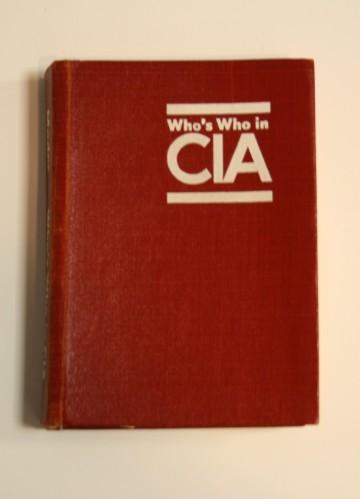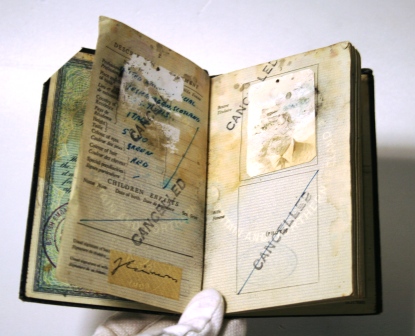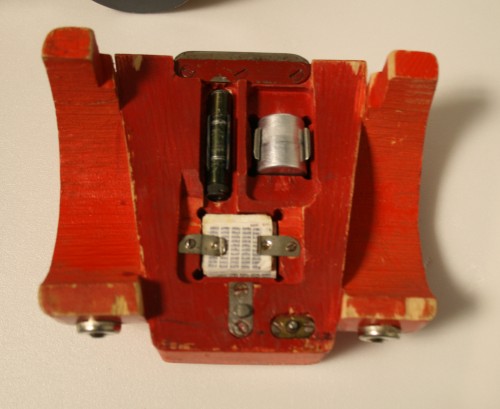
‘Boundaries’
courtesy of ‘Ghost_Bear’
Every Friday for the next six weeks, the International Spy Museum (ISM) will be debuting a new exhibit within the museum, including the addition of several new rare artifacts from the shadowy world of espionage. These new additions (some for a limited time only) join the already-extensive collection regarding the world’s “second-oldest profession” and the new gallery dedicated to espionage in the 21st Century. Several of these exhibits will tie into special programs occurring at the museum over the next few months, covering not only the secret history of spying but also exploring today’s hottest topics that daily impact the world of intelligence. “Espionage deals with clandestine, hidden information and the best spies make sure their every trace disappears, which makes finding personal pieces of tradecraft very challenging,” says Anna Slafer, ISM’s Director of Exhibitions and Programs. “Many of our new artifacts have to come us from intelligence agencies and the families of these famous spies, giving us a detailed story of these object’s role in history.”
And the lineup, after the jump.
2/5/10 Aurora Experiment. Playing in the Spy Museum’s new gallery dedicated to cyber warfare is Weapons of Mass Disruption, a video of an experiment conducted for the Department of Homeland Security that depicts a simulated cyber attack on a generator control station. The simulation led to the generator’s destruction, demonstrating the all-too-real infrastructure vulnerabilities of the U.S. power grid. On loan from four of the lead engineers who created and carried out the Aurora experiment, the museum is will display parts of the disabled generator.
2/12/10 Richard Welch Exhibit. CIA Station Chief Richard Welch was assassinated in Greece in 1975 by the radical Marxist organization Revolutionary Organization 17 November (17N). Welch had previously been outed as a CIA operative in the East German publication Who’s Who in CIA. His assassination eventually led to the Intelligence Identities Protection Act. On loan from the Welch family, the Museum will display the wristwatch Welch was wearing at the time of his assassination, copies of Who’s Who in CIA and the Senate Hearing leading to the Intelligence Identities Protection Act, and a reproduction 17N terrorist flag.
2/19/10 George Washington Letter. Were you aware that George Washington was also America’s first spymaster? Part of the Museum’s permanent collection, the original 1777 letter from Washington to Mr. Nathaniel Sackett requesting the establishment of a spy network in New York, will be on display just in time for George’s birthday.
2/26/10 Cambridge Five. Disillusioned by capitalism and British imperialism, Kim Philby was ready to explore any new idea; communism became particularly attractive to him. A member of a group of students from Cambridge University united by their beliefs Philby forged one of the most successful spy operations in history. On loan from H. Keith Melton, one of ISM’s board members, the Museum will have on display several of Philby’s personal items including a flask, camera, coat, and a photo of Lenin. Joining these are additional Cambridge Five artifacts including fellow conspirator John Cairncross’ passport and a 1st edition book written by Anthony Blunt.
3/5/10 Canadian Intelligence. Celebrating its 25th anniversary, the Canadian Security Intelligence Service (CSIS) has loaned several artifacts for display in the “School for Spies” gallery. Previously on display in the Canadian Embassy, these tools of the trade will include a camera concealed in a woman’s handbag, a toy truck with a miniature one-time pad, special lens and encoding sheet hidden inside, and a concealment device designed to look like a tree branch. CSIS has also loaned several items pertaining to Igor Gouzenko, a clerk for Soviet military intelligence at the Soviet Embassy in Canada, who defected and often regarded as the first instance of Cold War espionage. Gouzenko’s gun, written statement to the Royal Canadian Mounted Police, and scrapbook of his clippings will have a dedicated case in the “Red Terror” gallery.
3/12/10 Elizabeth Van Lew Artifact. A new acquisition to the museum’s permanent collection, this copybook by Virginia-based Civil War Union spy Elizabeth Van Lew will join the “Sisterhood of Spies” gallery. Written prior to Van Lew’s spy ring leadership, the book reveals a significant and oft-quoted passage: “Keep your mouth shut and your eyes and ears open.”
The International Spy Museum is located at 800 F. Street NW, in DC’s Penn Quarter. Tickets for the museum and other experiences can be purchased online or by calling 202.393.7798. The museum is currently running a 2-for-1 ticket special called “Operation: Snow Pea”, which expires February 28.






